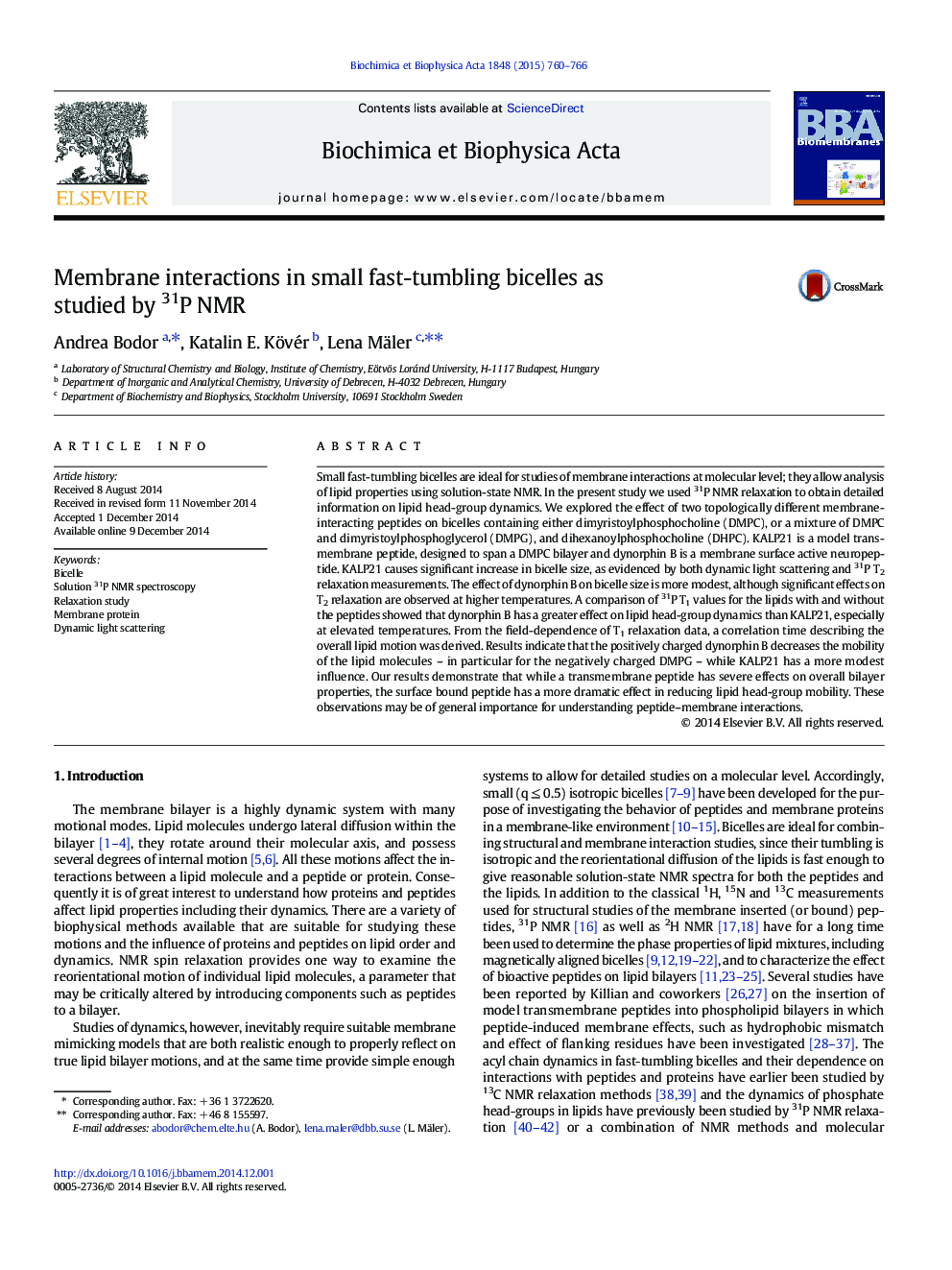| کد مقاله | کد نشریه | سال انتشار | مقاله انگلیسی | نسخه تمام متن |
|---|---|---|---|---|
| 1944029 | 1053174 | 2015 | 7 صفحه PDF | دانلود رایگان |

• 31P NMR is used for evaluating the mode of interaction of membrane-active peptides.
• Peptides may affect both the morphology and the dynamics of individual lipid molecules.
• Surface-bound DynB affects the overall reorientational motion of lipids.
• Transmembrane KALP21 affects the size and morphology of the bicelles.
Small fast-tumbling bicelles are ideal for studies of membrane interactions at molecular level; they allow analysis of lipid properties using solution-state NMR. In the present study we used 31P NMR relaxation to obtain detailed information on lipid head-group dynamics. We explored the effect of two topologically different membrane-interacting peptides on bicelles containing either dimyristoylphosphocholine (DMPC), or a mixture of DMPC and dimyristoylphosphoglycerol (DMPG), and dihexanoylphosphocholine (DHPC). KALP21 is a model transmembrane peptide, designed to span a DMPC bilayer and dynorphin B is a membrane surface active neuropeptide. KALP21 causes significant increase in bicelle size, as evidenced by both dynamic light scattering and 31P T2 relaxation measurements. The effect of dynorphin B on bicelle size is more modest, although significant effects on T2 relaxation are observed at higher temperatures. A comparison of 31P T1 values for the lipids with and without the peptides showed that dynorphin B has a greater effect on lipid head-group dynamics than KALP21, especially at elevated temperatures. From the field-dependence of T1 relaxation data, a correlation time describing the overall lipid motion was derived. Results indicate that the positively charged dynorphin B decreases the mobility of the lipid molecules – in particular for the negatively charged DMPG – while KALP21 has a more modest influence. Our results demonstrate that while a transmembrane peptide has severe effects on overall bilayer properties, the surface bound peptide has a more dramatic effect in reducing lipid head-group mobility. These observations may be of general importance for understanding peptide–membrane interactions.
Figure optionsDownload high-quality image (296 K)Download as PowerPoint slide
Journal: Biochimica et Biophysica Acta (BBA) - Biomembranes - Volume 1848, Issue 3, March 2015, Pages 760–766